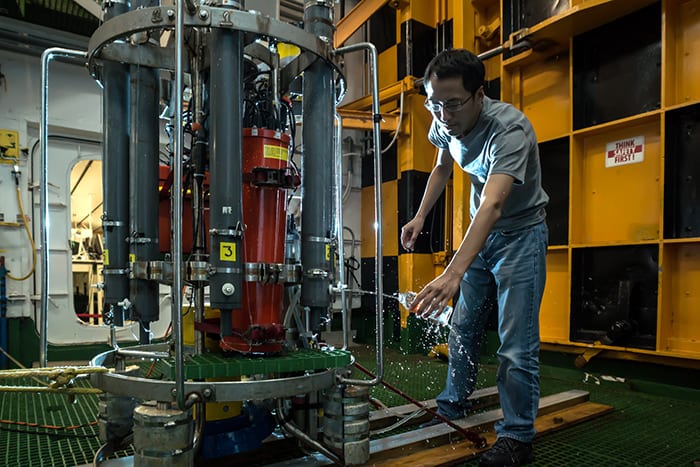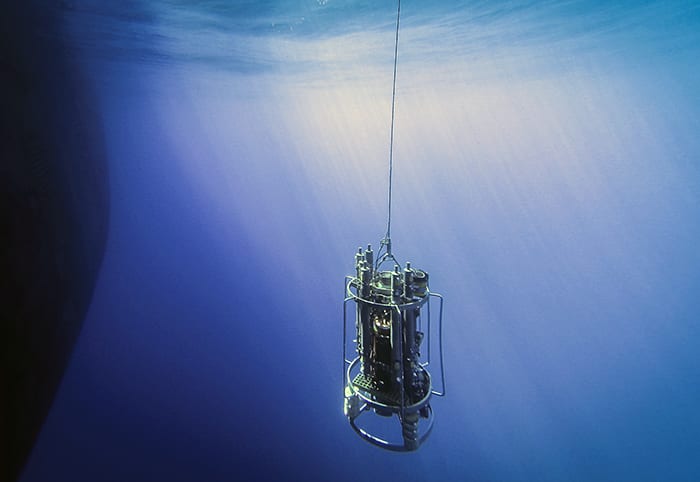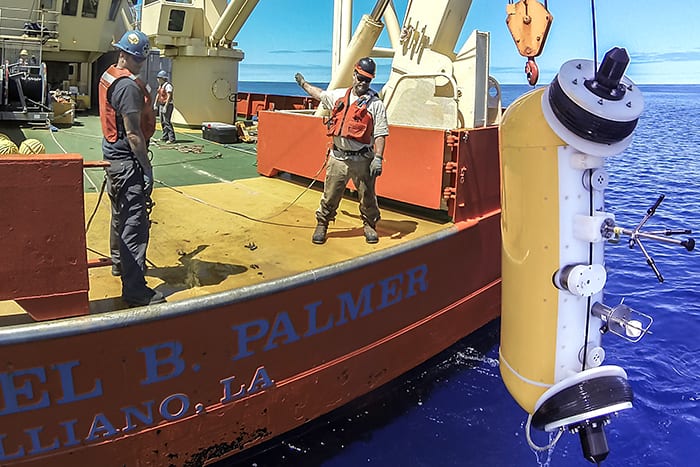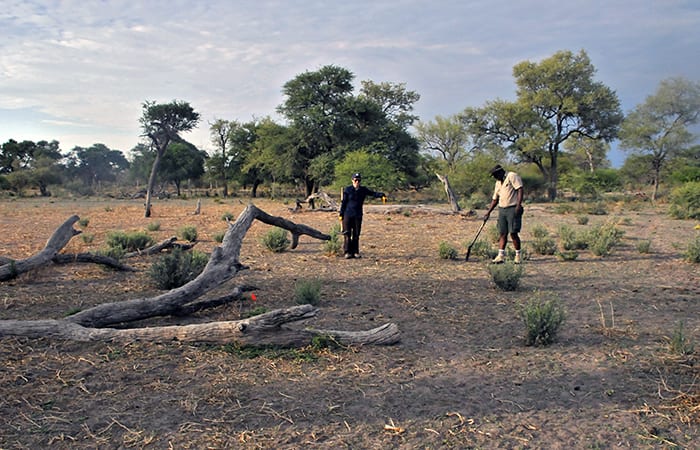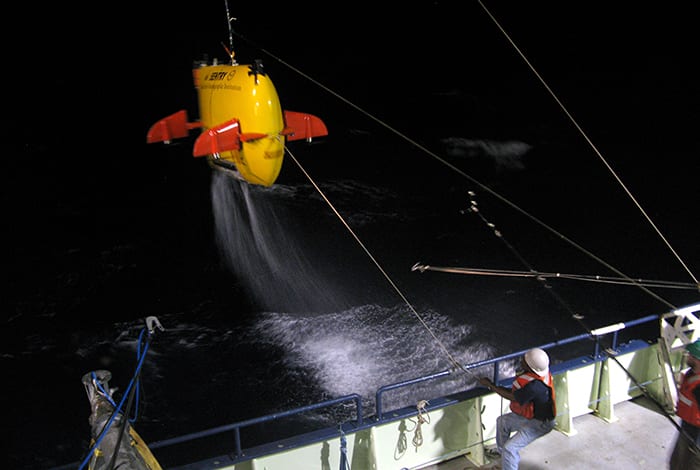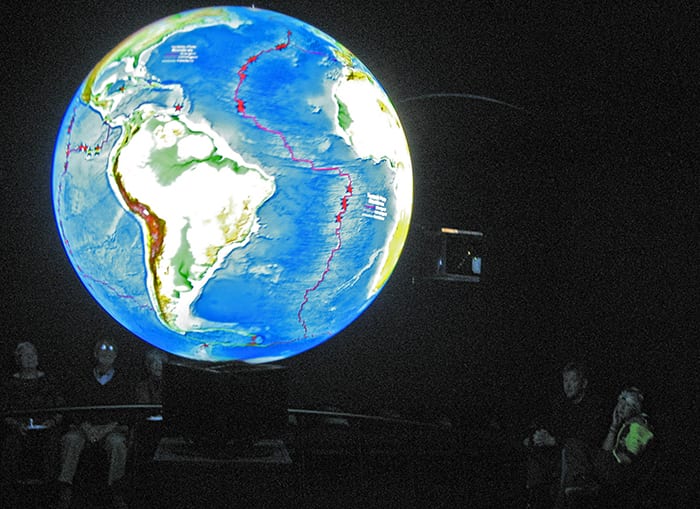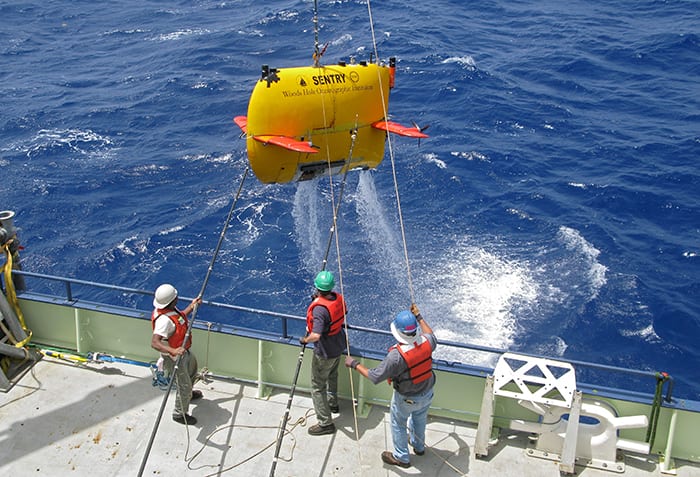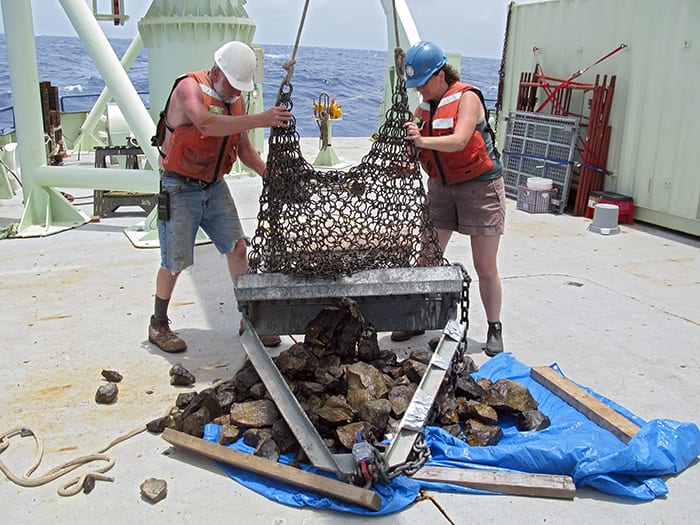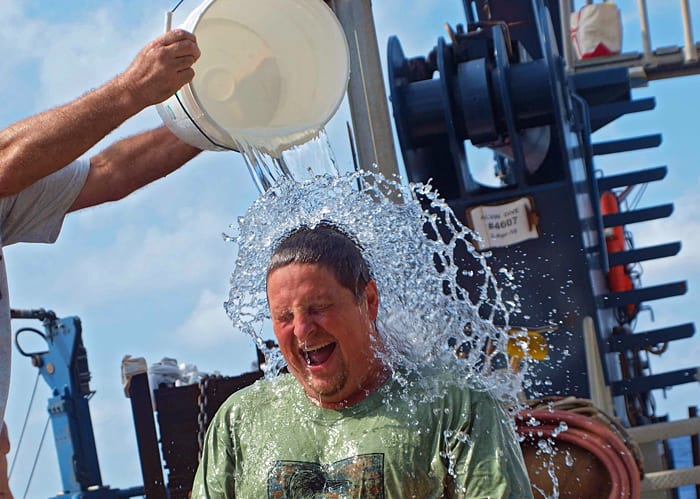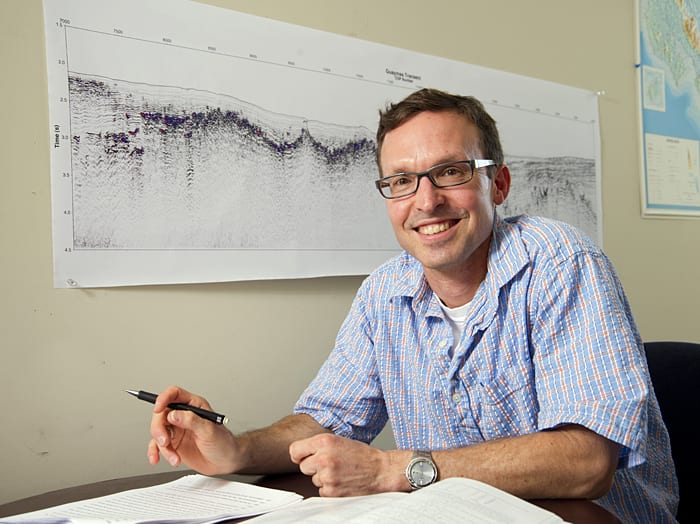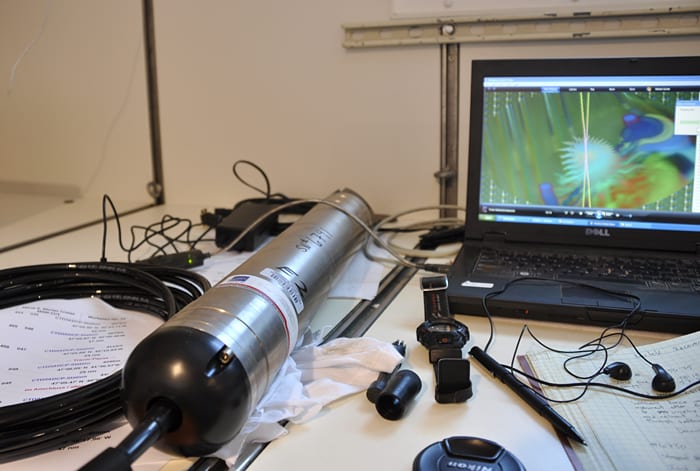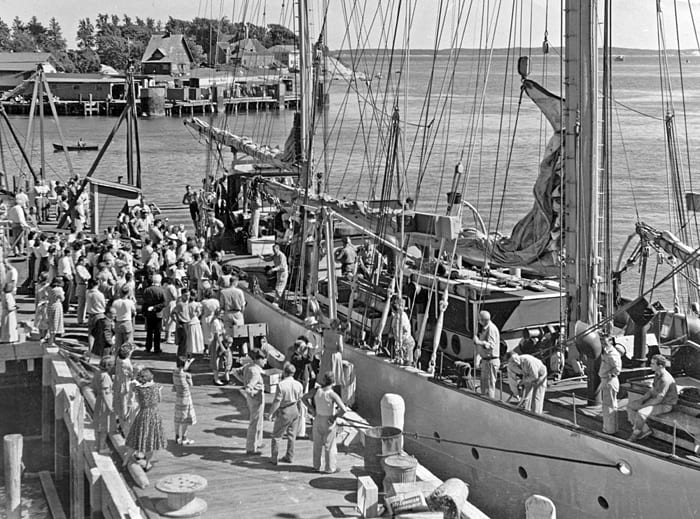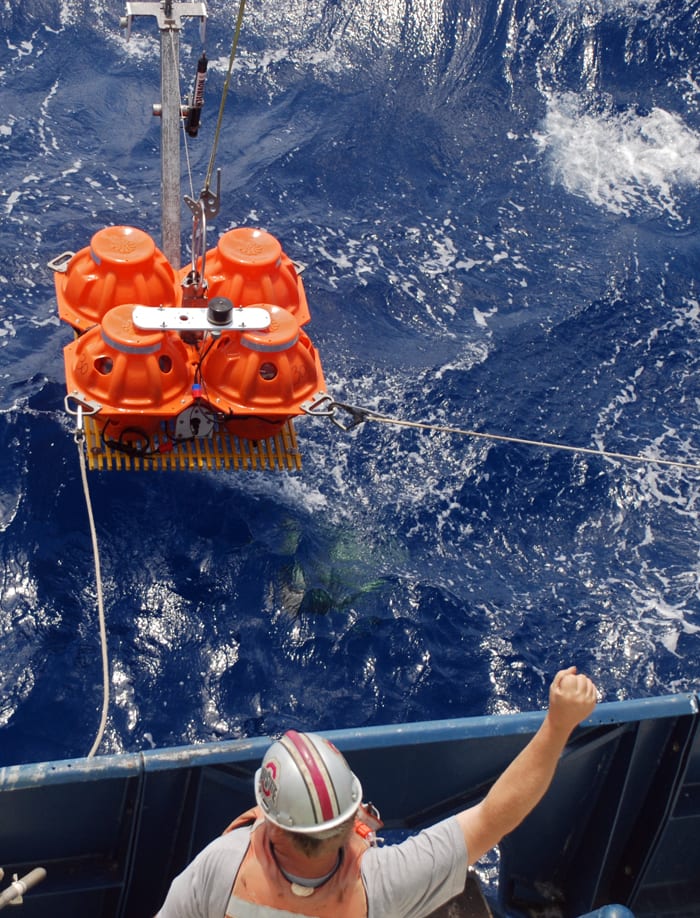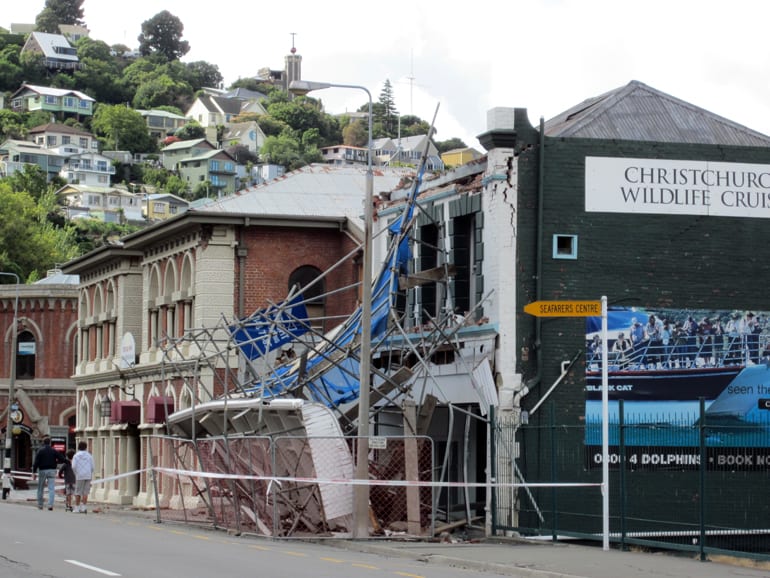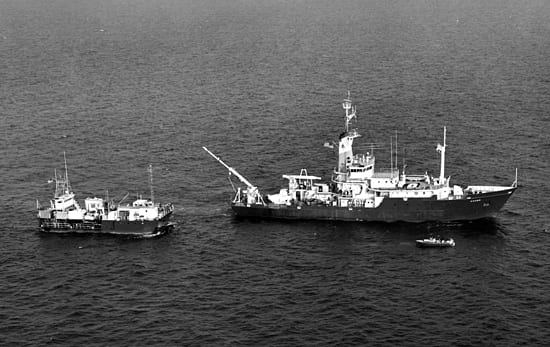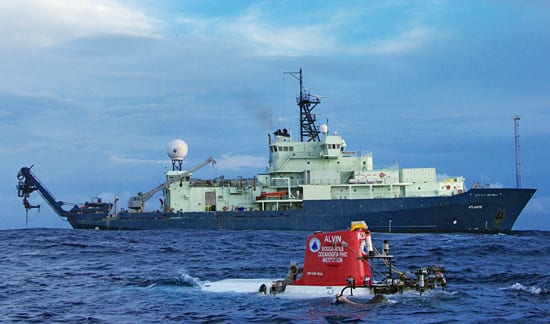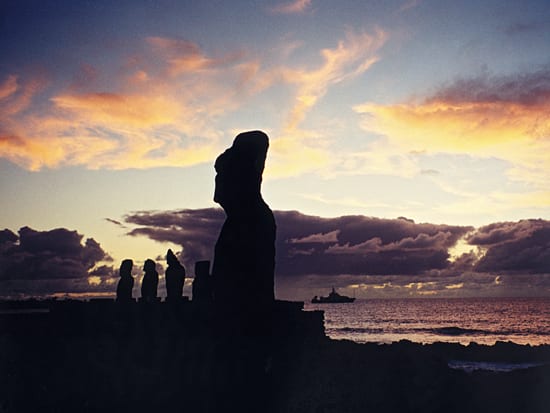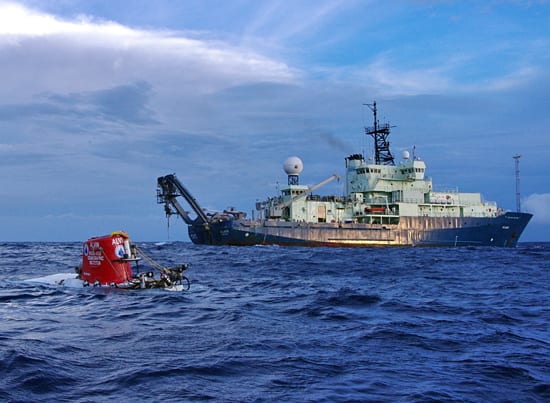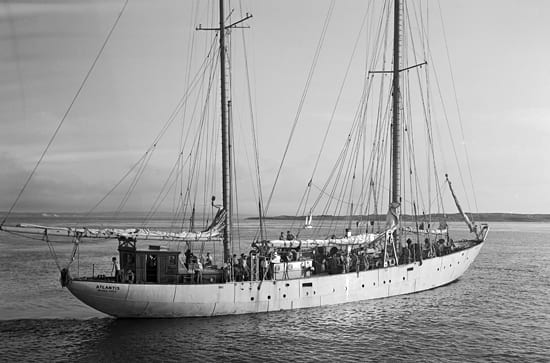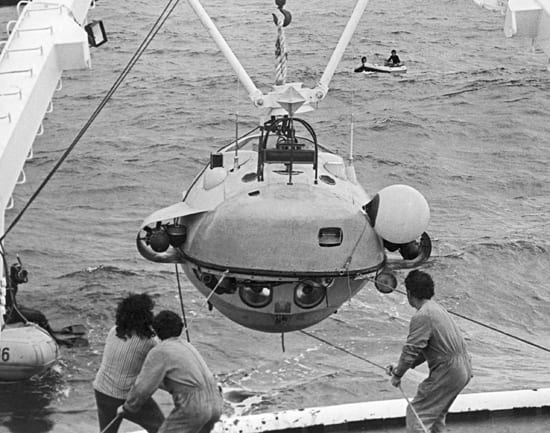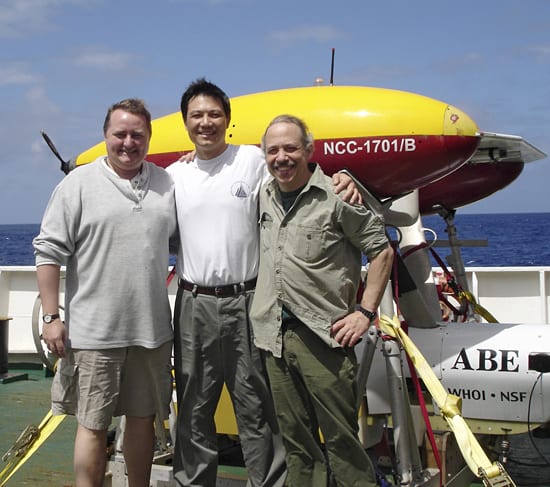Multimedia Items
Do More on DoMORE
Jian Zhao from the Lamont-Doherty Earth Observatory (LDEO) takes water samples from a CTD (conductivity, temperature, depth) rosette on board the research vessel Nathaniel B. Palmer during a 2015 expedition off…
Read MoreWhat Goes Down
A scientific instrument called a CTD (conductivity, temperature, depth) is pulled up to the research vessel Nathaniel B. Palmer from deep in the Atlantic Ocean. The 2015 expedition led by…
Read MoreClosing the Loop
The world ocean circulates like a conveyor belt, with cold, salty, dense water in the North Atlantic sinking beneath the surface. But one question remains a mystery: How do these…
Read MoreOnce and Future Ocean
MIT-WHOI Joint Program graduate student Laura Stevens marks the location of a buried geophone in Botswana along the East African Rift, where two pieces of Earth’s crust are separating, forming…
Read MoreMagnetic History
Clindor Cacho, a crewmember on R/V Knorr handles a tag line to steady the autonomous underwater vehicle (AUV) Sentry while recovering the vehicle in 2013 near Barbados. Sentry carried a…
Read MoreLife, Smoke, and Fire Underwater
Wednesday, December 4, is opening night for Global Viewport to Deep-Sea Vents, a collaborative exhibit created by WHOI and the Ocean Explorium in New Bedford. Visitors will learn about the…
Read MoreBack from Below
During a June 2013 trip from Barbados to Woods Hole, scientists and engineers on board R/V Knorr took a close look at regions of the seafloor along the Mid-Atlantic Ridge…
Read MoreCatch of the Day
R/V Knorr Bosun Peter Liarikos and Shipboard Scientific Services Group technician Amy Simoneau release a catch of rock specimens collected with a dredge near the Mid-Atlantic Ridge. Scientists on the…
Read MoreMaking a Splash
A bucket of ice-cold water is the traditional greeting for people returning from their first dive in the submersible Alvin. Here, WHOI data manager Scott McCue is ritually doused aboard…
Read MoreA New Way to Make Crust
Scientists have long thought that new ocean crust was only formed at spreading centers, where tectonic plates separate and allow magma to emerge from below. WHOI geophysicist Dan Lizarralde recently…
Read MoreAll in Two Year’s Work
Data from a Nortek DW Aquadopp current monitor is downloaded and analyzed after the instrument spent two years in the Atlantic Ocean south of Greenland, where important subsurface currents cross…
Read MoreBon Voyage
In 1948, a crowd gathered as the original research vessel Atlantis set sail from Cape Cod for a journey to the Mid-Atlantic Ridge, part of a long chain of mountains…
Read MoreOBS Recovery
Crew aboard the R/V Atlantis recover an ocean bottom seismometer (OBS) during a January 2009 expedition. The sensitive instruments are deployed on the seafloor to record ground movements from undersea…
Read MoreWitness to Destruction in New Zealand
WHOI geologist and earthquake expert Jian Lin arrived on New Zealand’s South Island two days after the deadly 6.3 magnitude earthquake struck that region on Feb. 22. Lin traveled to…
Read MoreKnorr and Lulu Head to Sea
A towline connects the crane of the R/V Knorr (right) to Lulu, a 105-foot catamaran that served as the Alvin submersible’s first tender, as the two ships prepared to take…
Read MoreAlvin to Investigate Gulf Spill
In April 2010, the deep submersible Alvin (shown here with its support ship, R/V Atlantis in the background) carried out a month-long expedition to to the Galapagos Spreading Center in…
Read MoreStone Giants
The R/V Atlantis works off the coast of Easter Island (Rapa Nui) in the southeastern Pacific Ocean during a 1998 research expedition. During the cruise, researchers used the submersible Alvin…
Read MoreFeeling GRUVEE
The Human Occupied Vehicle Alvin and the R/V Atlantis work in the waters off Galapagos Islands in April 2010 during the Galapagos Ridge Undersea Volcanic Eruptions Expedition (GRUVEE). A team…
Read MoreEarly days
Atlantis—the first Woods Hole Oceanographic Institution research vessel—departs the dock in July of 1947. This early cruise to Bikini Atoll yielded sediment cores from Henry Stetson’s coring device, echosounder profiles…
Read MoreAlmost Famous
The French submersible Cyana is launched into the North Atlantic in 1974 as part of the French-American Mid-Ocean Undersea Study (Project FAMOUS). The submersibletogether with the WHOI-operated Alvin and the…
Read MoreMission Accomplished
WHOI scientists Christopher German (left), Jian Lin (center), and Dana Yoerger stand in front of the ABE autonomous underwater vehicle on the deck of the Chinese research vessel Dayang 1…
Read More
